
|

|
|
Home Site Search Contact Us Subscribe
|
|
Best Architecture and Design Books of 2018 10 Books to deepen historical awareness and stretch imagination. By Norman Weinstein December 6, 2018 Hassan Fathy: Earth & Utopia by Salma Samar Damluji and Viola Bertini (Laurence King, £65; via Chronicle Books, $85) This mammoth miscellany of commentaries by Fathy’s associate Damluji, along with previously unpublished letters, drawings and watercolors, articles, interviews, and dramatic poetry by the multi-talented Egyptian modernist, is indispensable. Fathy (1900-1989) was startlingly ahead of his time in realizing the sustainable value embedded in vernacular Arab architecture. From apt mud brick applications to natural ventilation systems, Fathy discovered how ancient architectural know-how could be re-fashioned for modern needs. This book is a treasure trove from a logician and poet, engineer and architect, antiquarian and modernist.
Archigram – The Book by Warren Chalk, Peter Cook, and David Greene. With contributions by Michael Sorkin and Reyner Banham (Circa Press, $135) “And now for something completely different.” This evocation of Monty Python’s Flying Circus isn’t capricious or coy. British surrealism suffused pop art, fashion, and architecture of the 1960s and ‘70s, and the student architects whose creativity found serious collaged comedic form in Archigram, a publication that embodied Python’s Anglo-surrealism exquisitely. Funny thing about Archigram as considered circa 2018 is just how uncannily prescient these irreverent young architects were. Laugh at their wonky idealism about future computer-controlled cities underwater or in outer space. But laugh at your own risk. Their seemingly psychedelic verbal and graphic indulgencies are coming in-part disarmingly true. And how they shattered design dogmas through wild humor is needed more than ever. It’s not the only book on Archigram – but it is the most comprehensive, gorgeously designed and produced, with Michael Sorkin’s essay a rambunctiously spirited overview.
A History of Threshold: life, death & rebirth by Sensual City Studio (Jovis, $40) If you’re receptive to philosophical inquiries into architecture narrated primarily photographically, you’ll find this small volume captivating. The tantalizingly named “Sensual City Studio,” a young French architectural firm, has combed the globe for images spotlighting how obvious building thresholds demarcating or bridging markedly diverse spaces have gradually disappeared, thanks to Modernism’s insistence on informality of entrances/exits, and transparency inside and out. They predict a resurgence of explicit thresholds reflecting new technologies, and interiors with enhanced multi-sensory atmospheres.
McKim, Mead & White: Selected Works 1879 to 1915 by Charles Follen McKim, William Rutherford Mead, Stanford White, Richard Guy Wilson, and Leland M. Roth (Princeton Architectural Press, $100) Designed for a wealthy class of Americans enraptured by their image as latterday Roman Emperors, McKim, Mead & White fashioned a spectrum of classy, classical, civic urban buildings as well as palatial mansions. Many soldier on functionally a century after their construction. This massive tome highlighting dazzling photographs and intricately drafted plans is more than a “Selected Works.” The name of the firm survived into the 1950s, but the imperial gist of their over-the-top Greco-Roman-gone-Americana granite glory is found in these appropriately oversized pages. And amplified through helpful analysis by Wilson and Roth.
Steven Holl: Seven Houses: Luminist Architecture by Steven Holl. With contribution by Philip Jodidio (Rizzoli, $75) “Luminist” in the subtitle refers to an American 19th-century painting style highlighted in Holl’s summary underscoring “clarity of light and immensity of scale.” Holl has masterfully advanced that luminist vision architecturally through large-scale civic projects marked by lyrical sweeps of seemingly sculpted light. This invaluable and impeccably designed monograph concentrates, instead, on his homes, similarly enlightened. The “Ex of In House” ingenuously creates a 918-square-foot house, geothermally and solar-powered, with no bedroom, yet with inviting space to sleep five. A poetic understanding of site as a home’s foundation informs Holl’s masterful alchemy of wood and glass. These houses transcend being objects and are experiences of how Holl’s understanding of site and light enliven our sense of what “house” can mean.
Drawing Architecture by Helen Thomas (Phaidon, $79.95) Maybe this is the third compendium of architectural drawings by famous (and not so illustrious) architects that has crossed my path in recent years. The others dutifully reproduced the big names in the field. No surprises. But that is exactly why Drawing Architecture is an unexpected winner. Of course you’ll find representative drawings from Wright, Venturi, Hadid, and Gehry. But where else will you find “architectural drawings” by the anonymous Egyptian designer of 1350 BC, or by the 19th century Japanese slice-of-life artist Hokusai? Nowhere else in print will you be presented with the communist-cosmic-futurism of Ivan Leonidov’s 1928 worker’s club design along with Buckminster Fuller’s fourth dimension parking garage of the same vintage. Quirkily inclusive and arranged with an editorial whimsy forging startling associations across cultures and eras, this book is an instructive and charmingly loopy anthology of architectural imaginings for the young of all ages.
Xenia Simons Miller: Prairie Modernist by Connie Zeigler (Commercial Artisan, $15) This enthralling monograph centers upon Xenia Miller, an unsung talented designer who collaborated on Indiana homes credited to Eero Saarinen and Alexander Girard. Architectural historian Connie Zeigler writes about Miller with clarity and with full awareness of Miller’s tale as one of a notable catalyst, a modernist “midwife” to the modernist masters at midcentury. Produced with a winsome assortment of family photographs and house plans, and produced with panache by two brothers running an Indianapolis-based graphic design/down-home mini publishing house celebrating Indiana’s regional design history, this and their other stellar books about under-recognized designers can only be ordered through their website. Few well-established commercial presses publish with as much editorial acumen and artistic sensibility. Buy them all.
The Complete Zaha Hadid: Expanded and Updated by Aaron Betsky (Thames and Hudson, $40). Of the many hats Aaron Betsky has worn in the architectural world, perhaps the hat most gracefully fitting him is as author of the definitive monograph on Zaha Hadid. In his fourth iteration of what may be the final edition of The Complete Zaha Hadid – her passing might make future editions problematic – Betsky brilliantly contextualizes her 40-year design career through characterizing her as a ”great cinematographer. . .She perceived the city in slow motion, in pans, swoops and close-ups.” Despite this edition duplicating the same book design flaws of earlier versions – cramped text in tiny font jockeying for space with showers of graphics – you have all of Hadid’s built and unbuilt architecture designed during her lifetime illustrated between covers. And you get paintings and products as well as buildings intelligently interpreted by Betsky .This catalogue may have greater longevity than the firm that still bears her name.
Interior Landmarks: Treasures of New York by Judith Gura and Kate Wood. Principal photography by Larry Lederman (The Monacelli Press, $30) You can extract a great deal of the data about 46 New York City interior landmarks this glossy paperback celebrates in detail by checking out the interactive online map created by the NYC Landmarks Preservation Commission (LPC). Or you can be “old school” and get this book. The book’s descriptions of these designated gleaming interiors spanning years between the 1811 City Hall and the New York Public Library Rose Room restoration of 2017 are a good bit livelier than the writing on the LPC’s website. And Larry Lederman’s posh photography certainly bests that on the interactive landmarks website. This is a modest yet beguiling book of narratives about the historic quarters characterizing the Big Apple’s tasteful insides.
The Islamic World: A History in Objects by Ladan Akbarnia, Venetia Porter, Fahmida Suleman, William Greenwood, Zeina Klink-Hoppe, and Amandine Merat (Thames & Hudson, $39.95) If there is such an item as a “stealth” architecture book, this may warrant the label. A careful perusal of the acknowledgements page at the book’s conclusion reveals that the objects showcased in this text fill the new spaces of the British Museum’s Albukhary Gallery of the Islamic World. Oddly, the architectural firm responsible for designing this new space, Stanton Williams of London, is left unnamed. Their sensitive reconstruction of two 19th-century galleries elegantly nests the objects reproduced in these pages. All are illuminated as much as can be feasible through careful filtering of natural light. This book organizes the objects on display chronologically and thematically. These include historic Islamic works from the 7th century to 2017, such as ceramics, metalwork, calligraphy, textiles, musical instruments, illustrated manuscripts, and architectural decoration. This book's synthesis of Islamic history and art displays the global excellence of Islamic art in a new light. Give praises to the unsung architects who designed the space to stimulate enlightening angles of vision.
Norman Weinstein is the author of “Words That Build” – an exclusive 21-part ArchNewsNow.com series about writing as a keystone of a successful architectural practice. He's authored several books of poetry and books about music and literature. Weinstein is currently learning weaving in order to deepen his understanding of architecture, music, and poetry. He can be reached at nweinstein25@gmail.com.
More by Weinstein:
Weinstein: From Ada to Zaha and Everything In Between Op-eds, book reviews, musings, and debate.
An exclusive 21-part series that focuses on the overlooked foundations of architecture: oral and written communication.
Most recent:
Writing About Architecture As If Only Art Matters A new coffee table book about Frederic Church's Olana combines resplendent photography with essays reflecting architectural myopia.
Welcome New Books Reveal the Heart of the Matter in Architectural Design Kenneth Frampton's new edition of Kengo Kuma's works, along with Kate Franklin and Caroline Till's global survey of novel thinking about sustainable materials, offer new slants on how materials matter.
Educating Future Architects to Think Like Curious Clients Expanding architectural education to include more about client consciousness is a key to enriching the profession.
Architectural Education at the Crossroads? Educators Duo Dickinson and Phil Bernstein look in opposite directions when assessing architecture school quality - but the next architecture school transformation may emerge from where no one is looking. |
(click on pictures to enlarge) 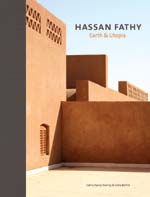 "Hassan Fathy: Earth & Utopia" by Salma Samar Damluji and Viola Bertini (Laurence King)  "Archigram – The Book" by Warren Chalk, Peter Cook, and David Greene, with contributions by Michael Sorkin and Reyner Banham (Circa Press) 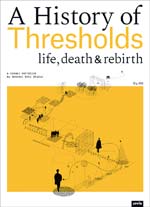 A History of Threshold: life, death & rebirth by Sensual City Studio (Jovis) 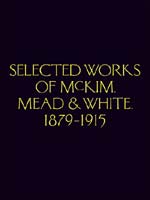 "McKim, Mead & White: Selected Works 1879 to 1915" by Charles Follen McKim, William Rutherford Mead, Stanford White, Richard Guy Wilson, and Leland M. Roth (Princeton Architectural Press)  "Steven Holl: Seven Houses: Luminist Architecture" by Steven Holl, with contribution by Philip Jodidio (Rizzoli) 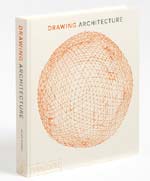 "Drawing Architecture" by Helen Thomas (Phaidon) 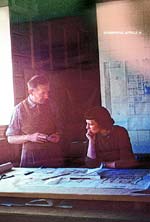 "Xenia Simons Miller: Prairie Modernist" by Connie Zeigler (Commercial Artisan)  "The Complete Zaha Hadid: Expanded and Updated" by Aaron Betsky (Thames & Hudson). 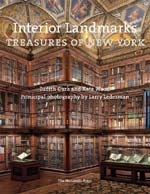 "Interior Landmarks: Treasures of New York" by Judith Gura and Kate Wood. Principal photography by Larry Lederman (The Monacelli Press)  "The Islamic World: A History in Objects" by Ladan Akbarnia, Venetia Porter, Fahmida Suleman, William Greenwood, Zeina Klink-Hoppe, and Amandine Merat (Thames & Hudson) |
© 2018 ArchNewsNow.com